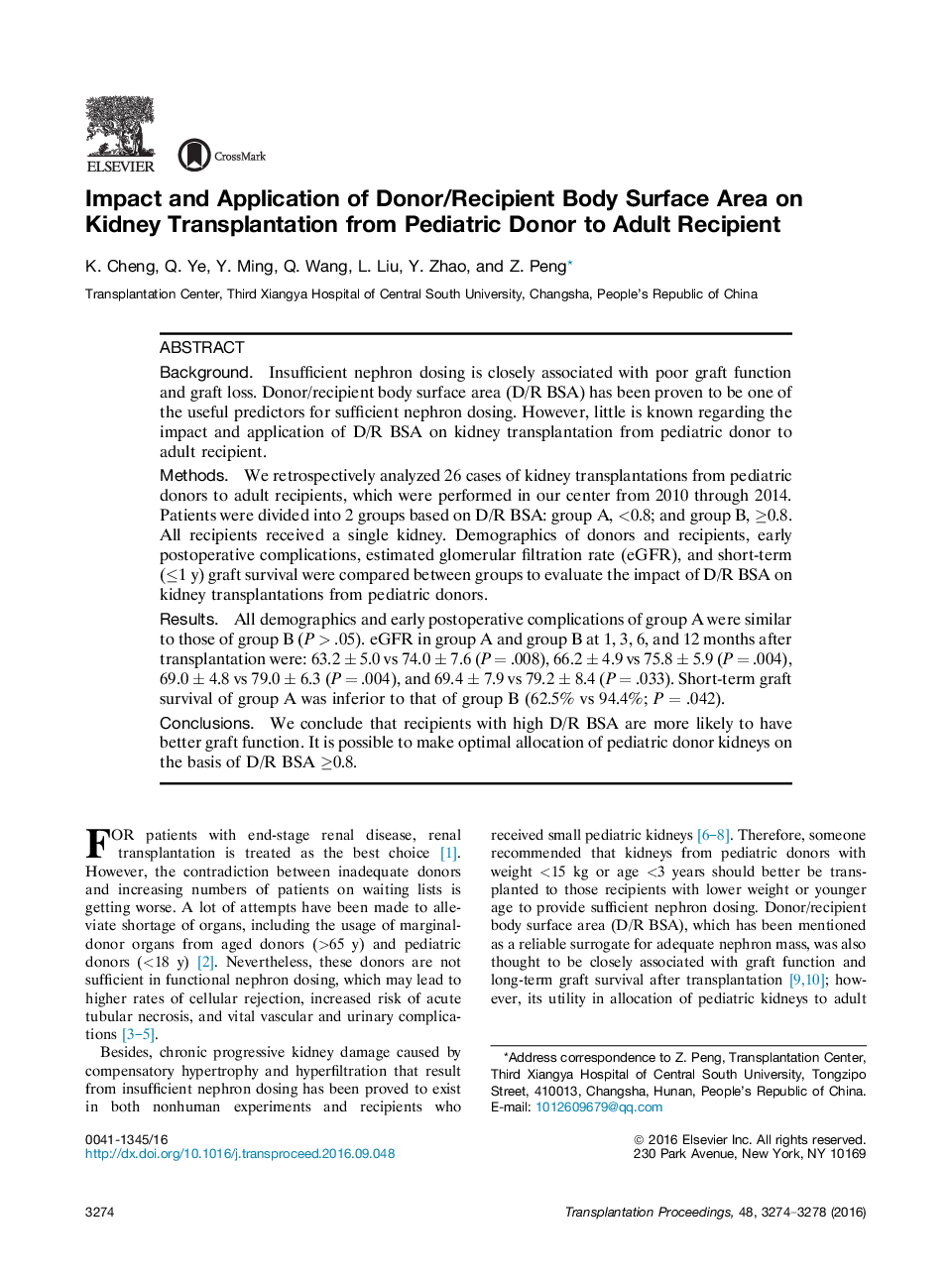| کد مقاله | کد نشریه | سال انتشار | مقاله انگلیسی | نسخه تمام متن |
|---|---|---|---|---|
| 5729082 | 1411675 | 2016 | 5 صفحه PDF | دانلود رایگان |
- We analyzed the impact of donor/recipient body surface area (D/R BSA) on kidney transplantation from pediatric donor to adult recipient.
- D/R BSA is a reliable predictor for graft function after kidney transplantation.
- D/R BSA can be regarded as an acceptable strategy for allocating pediatric donor kidneys.
BackgroundInsufficient nephron dosing is closely associated with poor graft function and graft loss. Donor/recipient body surface area (D/R BSA) has been proven to be one of the useful predictors for sufficient nephron dosing. However, little is known regarding the impact and application of D/R BSA on kidney transplantation from pediatric donor to adult recipient.MethodsWe retrospectively analyzed 26 cases of kidney transplantations from pediatric donors to adult recipients, which were performed in our center from 2010 through 2014. Patients were divided into 2 groups based on D/R BSA: group A, <0.8; and group B, â¥0.8. All recipients received a single kidney. Demographics of donors and recipients, early postoperative complications, estimated glomerular filtration rate (eGFR), and short-term (â¤1 y) graft survival were compared between groups to evaluate the impact of D/R BSA on kidney transplantations from pediatric donors.ResultsAll demographics and early postoperative complications of group A were similar to those of group B (P > .05). eGFR in group A and group B at 1, 3, 6, and 12 months after transplantation were: 63.2 ± 5.0 vs 74.0 ± 7.6 (P = .008), 66.2 ± 4.9 vs 75.8 ± 5.9 (P = .004), 69.0 ± 4.8 vs 79.0 ± 6.3 (P = .004), and 69.4 ± 7.9 vs 79.2 ± 8.4 (P = .033). Short-term graft survival of group A was inferior to that of group B (62.5% vs 94.4%; P = .042).ConclusionsWe conclude that recipients with high D/R BSA are more likely to have better graft function. It is possible to make optimal allocation of pediatric donor kidneys on the basis of D/R BSA â¥0.8.
Journal: Transplantation Proceedings - Volume 48, Issue 10, December 2016, Pages 3274-3278
